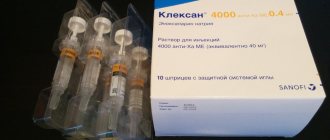Release form and composition
Dosage forms of Metronidazole:
- Solution for infusion: pale yellow with a greenish tint (100 ml in polyethylene bottles);
- Tablets for oral administration: flat-cylindrical, white or white with a yellowish-greenish tint, with a score and a bevel (10 pcs. in a strip packaging, in a cardboard pack of 1, 2, 3, 4 or 5 packs; 20 pcs. or 30 pcs. in a strip packaging, in a cardboard pack of 1, 2, 3, 10 or 400 packages);
- Vaginal suppositories: torpedo-shaped, white or pale yellow (5 suppositories in a blister, 2 blisters in a cardboard box);
- Vaginal gel 1%: colorless, pale yellow or yellowish-greenish (30 g each in aluminum tubes, complete with an applicator for intravaginal administration, 1 tube in a cardboard pack);
- Cream for external use 1% (15 g per tube);
- Gel for external use 1% (15 g per tube).
The active substance is metronidazole, the content depends on the form of release:
- Solution for infusion: 5 mg/1 ml (in 1 bottle – 500 mg);
- Tablets: 250 mg/piece;
- Vaginal suppositories: 100, 250 and 500 mg/piece;
- Vaginal gel: 10 mg/1 g;
- Cream or gel for external use: 10 mg/1 g.
Additional components:
- Solution for infusion: sodium dihydrogen phosphate dihydrate (sodium phosphate monosubstituted 2-aqueous), sodium chloride, water for injection;
- Tablets: stearic acid, potato starch, talc;
- Vaginal suppositories: polyethylene oxide 400, polyethylene oxide 1500;
- Vaginal gel: disodium edetate (disodium salt of ethylenediaminetetraacetic acid, Trilon B), propyl parahydroxybenzoate (nipazole, propylparaben), propylene glycol, carbomer (carbopol), purified water, sodium hydroxide;
- Cream: synthetic olbrot, cetyl alcohol, glycerol, stearic acid, methyloxybenzoate, sodium lauryl sulfate, purified water, propyloxybenzoate;
- Gel for external use: triethanolamine, ethanol, carboxypolymethylene 940, methyloxybenzoate, propyloxybenzoate, propylene glycol, disodium EDTA, water.
Indications for use
Solution for infusion and tablets:
- Protozoal infections: intestinal amebiasis (amebic dysentery), extraintestinal amebiasis (including amoebic liver abscess), trichomoniasis (including trichomonas urethritis, trichomonas vaginitis);
- Joint and bone infections, central nervous system infections (including brain abscess, meningitis), empyema and lung abscess, bacterial endocarditis, pneumonia, sepsis caused by Bacteroides spp. (including Bacteroides ovatus, Bacteroides distasonis, Bacteroides fragilis, Bacteroides vulgatus, Bacteroides thetaiotaomicron);
- Infections of the pelvic organs (abscess of the fallopian tubes and ovaries, endometritis, infections of the vaginal vault); skin and soft tissue infections; abdominal infections (liver abscess, peritonitis) caused by Clostridium spp., Peptostreptococcus spp. and Peptococcus spp.;
- Pseudomembranous colitis (due to antibiotics);
- Duodenal ulcer or gastritis associated with Helicobacter pylori;
- Radiation therapy for patients with tumors - as a radiosensitizing agent (in cases where tumor resistance is due to hypoxia in its cells);
- Prevention of postoperative complications (especially during interventions in the peri-rectal area, colon, appendectomy and gynecological operations).
Suppositories and vaginal gel:
- Urogenital trichomoniasis (including vaginitis, urethritis);
- Nonspecific vaginitis of various origins, confirmed by microbiological and clinical data.
Metronidazole gel and cream for external use:
- Vulgar and rosacea acne (including post-steroid acne);
- Infectious skin diseases;
- Trophic ulcers of the lower extremities (due to diabetes mellitus, varicose veins);
- Seborrheic dermatitis, oily seborrhea;
- Long-term non-healing wounds;
- Burns;
- Bedsores;
- Anal fissures.
Analogs
Metronidazole has many analogues, so if adverse reactions occur after taking it, you can always choose another, active analogue.
Similar drugs have similar effects on the body and are applicable for the same diseases , but they differ in composition, the presence of active substances, a list of indications, and contraindications.
The most popular analogues include:
- Trichopolum in the treatment of urogenital trichomoniasis;
- Fazizhin in injections to suppress anaerobic parasites by intravenous administration;
- Metrogyl gel in gynecology for the treatment of endometritis, vaginitis, damage to the fallopian tubes, ovaries;
- Klion (tablets, infusions) to achieve a better therapeutic effect;
- Tiberal, Dazolic as antiparasitic analogues;
- Ornidazole, Bacimex in the treatment of bacterial vaginosis, non-healing purulent ulcers.
Using the table you can see some analogues and release forms of Metronidazole:
| Analogs | Release forms | Active substance | Indications for use | Contraindications |
| Klion | Solutions, Tablets | Metronidazole | Diseases in gynecology caused by infection | Breastfeeding, kidney and liver failure |
| Rozamet | Cream | Metronidazole | Vulvitis, vulvovaginitis, cervicitis | Pregnancy, lactation |
| Trichopolum | injection tablets, vaginal suppositories | Metronidazole | Venereal diseases, postoperative period | Alcoholism, blood diseases, pregnancy |
| Metrogil | Vagina gel, cream | Metronidazole | Vaginitis | Pregnancy, breastfeeding |
| Diflazon | Infusions, injections | Metronidazole | Sexual infections, postoperative period | Pregnancy, breastfeeding, hypersensitivity, dyscrasia |
| Fazizhin | Pills | Tinidazole | Trichoniasis, endometritis | Blood diseases, pregnancy and lactation, damage to the nervous system |
Contraindications
- Organic lesions of the central nervous system (including epilepsy);
- Leukopenia (including history);
- Liver dysfunction (in case of taking high doses);
- Impaired coordination of movements;
- I trimester of pregnancy;
- Breastfeeding period;
- Hypersensitivity to the components of the drug.
Use the drug with extreme caution in case of renal and/or liver failure, pregnancy in the 2nd and 3rd trimesters (only for health reasons).
Pharmaceutical action
The pharmacological effect of the drug Metronidazole is provided by the component 5-nitroimidazole. This effective component violates the integrity of the structure of such parasites as: amoebas, lamblia, gardnerella, trichomonas. Has a detrimental effect on most anaerobic microbes.
According to the “instructions for use” manual, the medication has a rare specificity: it acts on tumors to increase their susceptibility to radiation.
This medical drug belongs to the antiprotozoal clinical and pharmacological group with strong antibacterial activity. Also neutralizes germs such as:
- streptococci (including aureus);
- Proteus vulgaris.
Directions for use and dosage
Metronidazole tablets are taken orally, after or during meals, swallowed whole without chewing.
When treating trichomoniasis, the drug is taken for 10 days, 2 times a day, 250 mg, or for 5-8 days with the same frequency of administration, 400 mg; women are recommended to additionally use Metronidazole gel or suppositories intravaginally. If necessary, the dose can be increased to 750-1000 mg per day or a second course of treatment can be carried out at intervals of 3-4 weeks, during which repeated control laboratory tests should be performed. Also, an alternative treatment regimen is a single dose of 2000 mg tablets taken by the patient and his sexual partner.
For amebiasis, adults take the drug for 7 days, 1500 mg per day, divided into 3 times, for acute amoebic dysentery - with the same frequency of administration, the daily dose is 2250 mg, treatment lasts until the signs of the disease cease. Children are prescribed tablets 3 times a day at the rate of 30-40 mg per 1 kg of weight.
For giardiasis, Metronidazole is taken 2-3 times a day for 5 days, adults 750-1000 mg per day, children - depending on age:
- 2-5 years – 250 mg;
- 5-10 years – 375 mg;
- 10-15 years – 500 mg.
For the treatment of liver abscess, the drug is prescribed in combination with antibiotics (tetracyclines) or other methods of therapy for 3-5 days, the dose per day should not exceed 2500 mg, divided into several doses. Children are prescribed the drug in a daily dose depending on age:
- 1-3 years – 1/4 adult dose;
- 3-7 years – 1/3 adult dose;
- 7-10 years – 1/2 adult dose.
When treating ulcerative stomatitis, adults take tablets for 3-5 days, 2 times a day, 500 mg, when treating pseudomembranous colitis at the same dose 3-4 times a day, when eradicating Helicobacter pylori - 3 times a day for 7 days. as part of combination therapy.
To prevent complications after surgery, Metronidazole is recommended to be taken 3-4 days before surgery at a daily dose of 750-1500 mg in 3 divided doses, or a single dose of 1000 mg on the first day after surgery. A few days after surgery, the drug can be prescribed at a dose of 750 mg per day for 7 days.
In case of severe renal impairment, the dose is reduced by 2 times.
The drug is used intravenously in the form of a solution in case of severe infection, as well as in cases where it is impossible to take tablets orally.
When carrying out intravenous infusions, Metronidazole must not be mixed with other medications!
The rate of intravenous jet or drip administration is 5 ml per minute with a break between infusions of 8 hours. For children under 12 years of age, Metronidazole is recommended to be administered at a dose of 7.5 mg/kg body weight in 3 doses per day, for adults and adolescents over 12 years of age - in a single dose of 500 mg, the maximum daily dose should not exceed 4000 mg, the duration of therapy is determined individually. Depending on the indications and the nature of the infection, in the future, if possible, it is recommended to switch to the oral form.
In order to prevent anaerobic infection, before a planned operation on the urinary tract and pelvic organs, the solution in children over 12 years of age and adults is used in the form of infusions at a dose of 500-1000 mg, on the day of surgery and the next day - 500 mg every 8 hours (1500 mg per day). After a few days, the patient is usually switched to taking pills.
In case of severe impairment of the liver and/or kidneys (creatinine clearance less than 30 ml/min), the drug is used per day at a maximum dose of 1000 mg, divided into 2 doses.
As a radiosensitizing agent, Metronidazole is administered intravenously 30-60 minutes before the start of irradiation at a dose of 160 mg/kg body weight or 4000-6000 mg/m2 of body surface, but a single dose should not exceed 10,000 mg. The drug is used for 7-14 days before each irradiation session, the course dose should be no more than 60,000 mg, and the drug is not used during radiation therapy in the future. To relieve intoxication caused by radiation, saline solution, 5% dextrose solution or hemodez are infused.
For skin cancer, cancer of the uterus and cervix, the drug is used 1.5-2 hours before irradiation locally in the form of applications, soaking the tampons used with 3000 mg of a solution diluted in a 10% solution of dimethyl sulfoxide. If positive dynamics of tumor clearance from necrosis are observed, applications are carried out during the first 2 weeks of therapy, if tumor regression is poor - during the entire course of radiation therapy.
Metronidazole suppositories are used intravaginally. In the treatment of trichomonas vaginitis, the drug is used for 10 days, introducing 1 suppository deep into the vagina at a dose of 250 mg 2 times a day or at a dose of 500 mg 1 time a day.
For the treatment of nonspecific vaginitis, use 1 vaginal suppository of 500 mg 2 times a day for 7 days.
Vaginal gel is used intravaginally, the recommended single dose is one full applicator (5 g of the drug - 50 mg of metronidazole), administered for 5 days, 2 times a day, in the morning and at night.
Cream and gel for external use are recommended for use for 3-6 weeks, applying a thin layer to the affected areas of the skin 2 times a day. It is permissible to alternate the application of cream and gel with an interval of 12 hours.
For children
The dosage and regimen of taking the drug for children should only be prescribed by a doctor. As a rule, children under 1 year of age are prescribed 125 mg per day, children 2-4 years old should receive 250 mg per day, children 5-8 years old should receive 375 mg per day.
Children over 8 years of age are prescribed 500 mg of the drug per day. Why tablets are prescribed, and whether it is advisable, depends on the diagnosis. Products for external use are prescribed to children after reaching 12 years of age.
Side effects
- Nervous system: weakness, dizziness, impaired coordination of movements, peripheral neuropathy, headache, drowsiness, depression, confusion, convulsions, ataxia, increased excitability, insomnia, irritability, hallucinations;
- Digestive system: metallic taste in the mouth, loss of appetite, vomiting, diarrhea, nausea, constipation, intestinal colic, pancreatitis, dry mouth, stomatitis, glossitis;
- Genitourinary system: urine staining red-brown, candidiasis of the vaginal mucosa, polyuria, cystitis, dysuria, urinary incontinence;
- Hematopoietic system: reversible neutropenia (leukopenia);
- Hepatobiliary system: jaundice, cholestasis, increased activity of liver enzymes;
- Allergic reactions: skin hyperemia, skin rash, urticaria, arthralgia, fever, nasal congestion, angioedema and anaphylactic reaction, erythema multiforme;
- Local reactions: hyperemia, swelling and pain at the injection site;
- Other: increased temperature, flattening of the T wave on the electrocardiogram.
special instructions
The solution for mixed infections can be used in combination with parenteral antibiotics, without mixing the drugs with each other.
Metronidazole should not be used in combination with amoxicillin in persons under 18 years of age.
During therapy, it is prohibited to consume ethanol (due to the risk of developing a disulfiram-like reaction, manifested by a sudden rush of blood to the face, vomiting, nausea, cramping abdominal pain, headache).
With a long course, it is necessary to monitor the blood picture (due to the possible occurrence of minor leukopenia). If leukopenia occurs, the possibility of continuing therapy depends on the threat of development of the infectious process.
If a deterioration in the neurological status is observed (ataxia, dizziness), it is necessary to stop taking the drug.
It is recommended to abstain from sexual activity during treatment of trichomonas vaginitis in women and trichomonas urethritis in men; simultaneous treatment of sexual partners is mandatory. After a course of treatment for trichomoniasis, control tests are carried out before and after menstruation for 3 consecutive cycles.
If treatment is necessary for more than 10 days, it is necessary to carefully evaluate the ratio of the expected effect of the drug and the risk of potential complications.
Due to the possible occurrence of undesirable reactions from the central nervous system, during the period of therapy it is recommended to refrain from driving a car or other complex mechanisms.
Reviews
(Leave your feedback in the comments)
I suffered from urethritis for a long time until I saw a professor, who prescribed Metronidazole for me. When I heard the price for it at the pharmacy, I thought that for such pennies it wouldn’t help: 10 tablets 7 rubles. But I took 1 course and the disease has not bothered me for 8 months. Svetlana
The doctor prescribed Metronidazole for acne. After 10 days of use, the skin became clear. During treatment you should not drink alcohol. Rose
* — Average value among several sellers at the time of monitoring, is not a public offer
Drug interactions
Please note that when used simultaneously with metronidazole:
- Disulfiram - can provoke the appearance of various neurological symptoms (the break between doses of drugs should be at least 14 days);
- Cimetidine – increases the concentration of the drug in the blood serum and increases the risk of side effects;
- Sulfonamides – enhance the antimicrobial effect;
- Phenytoin, phenobarbital (drugs that stimulate microsomal oxidation enzymes in the liver) - reduce the plasma concentration of metronidazole;
- Prednisone – reduces the effectiveness of the drug.
Effect of metronidazole on other substances/drugs:
- Indirect anticoagulants – potentiates their effect;
- Lithium – increases its concentration in the blood and contributes to the development of symptoms of intoxication;
- Fluorouracil - aggravates its toxic effect.
It is not recommended to combine the drug with non-depolarizing muscle relaxants (vecuronium bromide).
Pharmacological properties of the drug Metronidazole
A nitroimidazole derivative that has antiprotozoal and bactericidal effects. Active against Trichomonas vaginalis, Entamoeba histolytica , Giardia Lamblia , as well as against obligate anaerobes, including anaerobic gram-negative bacteria ( Bacteroides spp. , including the Bacteroides fragilis group , Fusobacterium spp. ), anaerobic gram-positive bacteria ( Clostridium spp. and sensitive strains Eubacterium ), anaerobic gram-positive cocci (including Peptococcus spp. and Peptostreptoccus spp. ). Not active against aerobic bacteria. The formation of resistance of infectious agents to metronidazole has not been observed. Metronidazole penetrates into microorganisms, and its nitro group is probably converted into hydroxylamine, which contributes to the effect on the DNA of microorganisms, leading to their death. Almost completely absorbed after oral administration. Concomitant food intake does not affect the absorption of metronidazole. After oral administration at a dose of 200 mg, the maximum plasma concentration (about 5 mcg/ml) is achieved in approximately 1–2 hours. Less than 10% of metronidazole is bound to plasma proteins. Quickly distributed in the body. It enters the liver and is excreted in high concentrations in bile. Partially excreted in urine unchanged and in the form of metabolites.
Terms and conditions of storage
Keep away from children! Keep:
- Tablets: in a dry place, protected from light;
- Vaginal gel, gel for external use: in a dry place, protected from light, at a temperature of 15–25 °C. Do not freeze;
- Cream for external use: at a temperature of 5–15 °C;
- Solution for infusion: in a place protected from light, at a temperature not exceeding 25 °C;
- Candles: in a dry place, protected from light, at a temperature of 15–25 °C.
Shelf life:
- Tablets, solution for infusion, suppositories – 3 years;
- Gel and cream for external use, vaginal gel – 2 years.
Features of use during pregnancy and lactation
In accordance with the annotation attached to the medication, Metronidazole belongs to the B category of drugs, which implies restrictions on use during pregnancy and breastfeeding.
- The medication quickly penetrates the placental barrier, as a result of which the use of this medication is prohibited in the initial stages of pregnancy. If the therapeutic effect is vitally necessary, then the pregnancy is arbitrarily terminated;
- During the 2nd and 3rd trimesters of gestation, the advisability of using a pharmaceutical product is confirmed by the critical condition of the patient.
Since the active component of the drug passes into breast milk, there is a need to temporarily stop breastfeeding.










